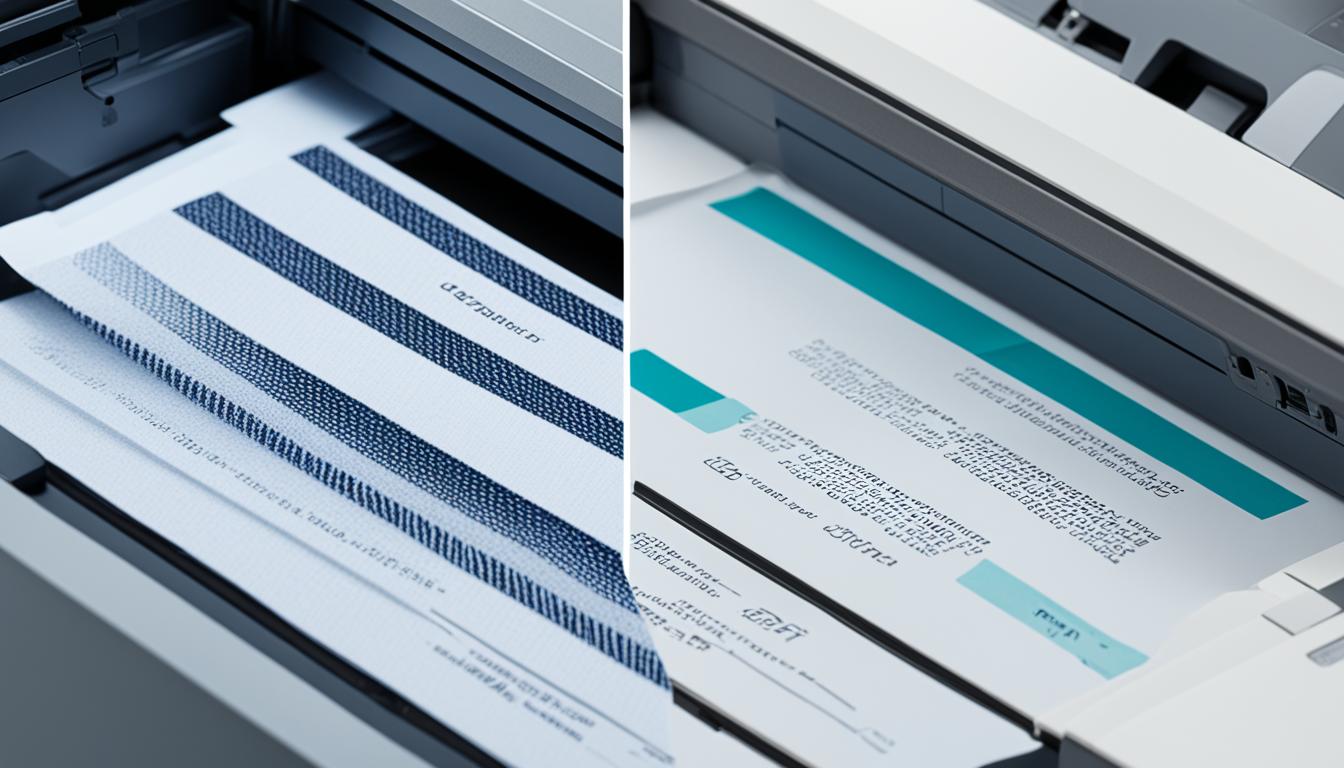When it comes to toner, you have choices: do you purchase the Original Equipment Manufacturer (OEM) toner, or go with a cheaper, but allegedly compatible toner? The difference between the two lies in their cost and quality. While OEM toner cartridges are more precise and offer better print quality, compatible toners are cheaper but can be inconsistent in terms of quality and lifespan. It’s important to weigh the pros and cons before making a decision.
- Genuine toners offer higher print quality and lower risk of malfunctioning but come at a higher price.
- Compatible toner cartridges are cheaper but can be inconsistent in quality.
- Consider the long-term cost-effectiveness and choose the option that best suits your printing needs.
Understanding Toner and its Types
When it comes to printing, understanding the different types of toner and their characteristics can help you make an informed decision. Toner, unlike liquid ink, is a fine powder that relies on static electricity and heat from a fuser to adhere to the paper. This results in precise and high-quality prints that are smudge-resistant and long-lasting.
There are various types of toner cartridges available on the market, including OEM cartridges, compatible toner cartridges, and remanufactured toner cartridges. Let’s explore each type in more detail:
OEM Cartridges
OEM cartridges, or Original Equipment Manufacturer cartridges, are produced by the printer manufacturer themselves. These cartridges are designed specifically for their respective printer models, ensuring compatibility and optimal performance. OEM cartridges are known for their precise manufacturing standards and high-quality prints. They offer reliability and consistency, making them a popular choice for businesses and individuals seeking professional print results.
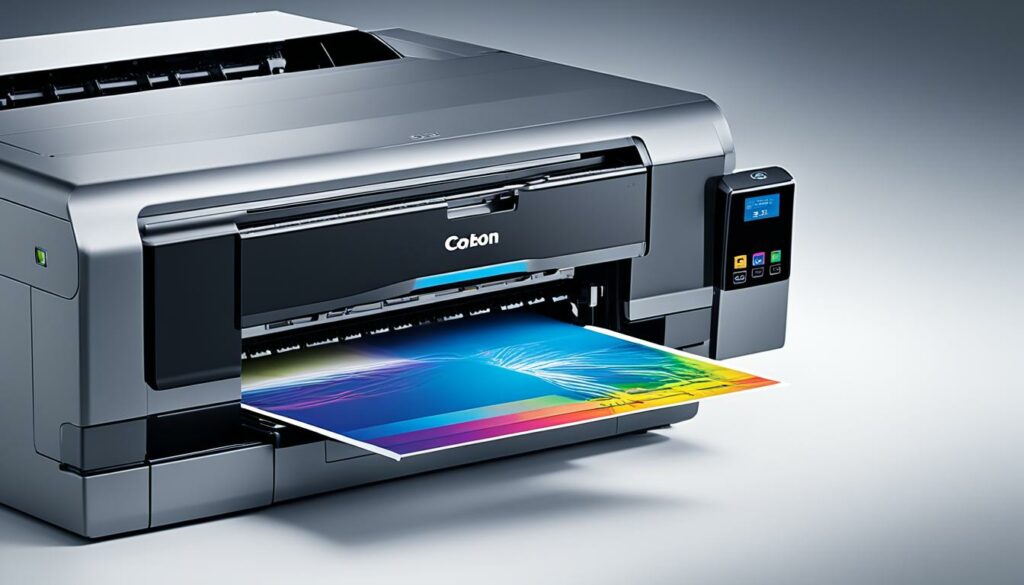
Compatible Toner Cartridges
Compatible toner cartridges are third-party alternatives to OEM cartridges. These cartridges are designed to be compatible with specific printer models and offer similar functionality to OEM cartridges at a lower cost. While compatible toner cartridges can be a more budget-friendly option, it’s important to note that the quality and performance may vary among different brands. Some compatible cartridges may provide comparable print quality, while others may fall short in terms of consistency and longevity. It’s essential to choose a reputable brand when opting for compatible toner cartridges to ensure a satisfactory printing experience.
Remanufactured Toner Cartridges
Remanufactured toner cartridges are brand-name cartridges that have been used and then refilled with toner. These cartridges undergo a meticulous refurbishing process, which involves cleaning, inspecting, and replacing any worn-out components. Remanufactured toner cartridges offer an eco-friendly alternative by reducing waste and promoting sustainability. However, it’s important to note that the quality of remanufactured cartridges can vary depending on the remanufacturing process and the brand. Some remanufactured toner cartridges may deliver excellent results comparable to OEM cartridges, while others may have inconsistencies or potential defects.
Ink vs. Toner
While toner is a powder used in laser printers and copiers, ink is a liquid used in inkjet printers. The choice between ink and toner depends on your printing needs and preferences. Toner-based prints generally offer sharper text, enhanced detail, and are more resistant to water and smudging. In contrast, inkjet prints may have more vibrant colors and are often preferred for photo printing. Both ink and toner have their advantages and disadvantages, so consider your specific printing requirements when selecting a printer type.
Now that you have a better understanding of toner and its types, you can make an informed decision when purchasing cartridges for your printer. Whether you opt for OEM cartridges, compatible toner cartridges, or remanufactured toner cartridges, it’s important to balance quality, cost, and environmental considerations to find the best option for your printing needs.
Pros and Cons of OEM Toner Cartridges
OEM toner cartridges are highly regarded for their exceptional quality and precision. They offer a range of benefits but also come with a few considerations to keep in mind.
Pros of OEM Toner Cartridges
- High Print Quality: OEM toner cartridges are engineered specifically for the printer model they are designed for. This precise compatibility ensures superior print quality with vibrant colors, sharp text, and detailed images.
- Lower Fail Rate: With careful manufacturing processes and rigorous quality control, OEM toner cartridges have a significantly lower fail rate compared to compatible alternatives. This means fewer printer malfunctions and less downtime.
- Manufacturer’s Warranty: OEM toner cartridges typically come with a manufacturer’s warranty, providing added peace of mind. If any issues arise, you can rely on the support and assistance of the printer’s original manufacturer.
Cons of OEM Toner Cartridges
- Higher Price: One of the main drawbacks of OEM toner cartridges is their higher price point. Compared to compatible toner cartridges, OEM options are generally more expensive. It’s important to consider the cost implications when making a purchasing decision.
| OEM Toner Cartridges | Compatible Toner Cartridges | |
|---|---|---|
| Print Quality | High | Varies; may not match OEM quality |
| Fail Rate | Low | Varies; may be higher compared to OEM |
| Price | Higher | Lower |
Despite the higher cost, OEM toner cartridges offer exceptional print quality, reliability, and the assurance of a manufacturer’s warranty. Consider your printing needs, budget constraints, and long-term cost-effectiveness when choosing between OEM and compatible toner cartridges.
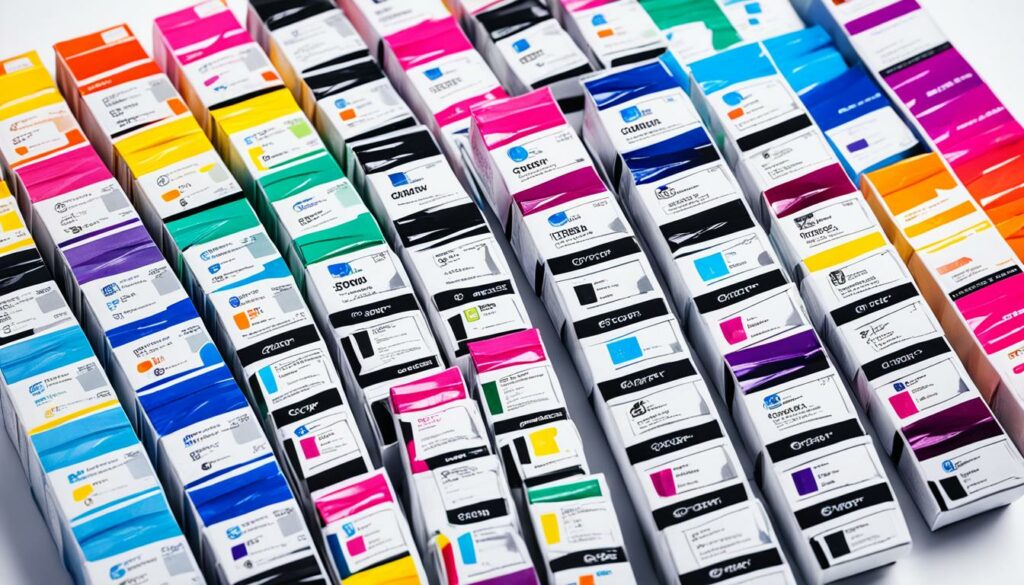
Pros and Cons of Compatible Toner Cartridges
When it comes to purchasing toner cartridges, compatible options offer a tempting cost-saving alternative to OEM cartridges. However, it’s essential to be aware of the pros and cons before making a decision. Here, we outline the advantages and drawbacks of compatible toner cartridges.
Pros of Compatible Toner Cartridges
- Price: One of the primary advantages of compatible toner cartridges is their affordability. They are significantly cheaper than OEM cartridges, making them a cost-effective option for budget-conscious consumers.
- Print Volume: Compatible toner cartridges often provide a high print yield, allowing users to produce a large volume of prints without the need for frequent replacements.
Cons of Compatible Toner Cartridges
- Quality: The major downside of compatible toner cartridges is the inconsistent quality they may offer. While some third-party manufacturers create high-quality cartridges that perform comparably to OEM options, others may produce cartridges with varying print density, resulting in subpar prints.
- Potential Problems: In addition to print quality issues, compatible toner cartridges may encounter problems such as vertical lines on the page, light prints, and toner smearing. These issues can be frustrating and affect the overall print experience.
- Shorter Lifespan: Another drawback of compatible toner cartridges is their potential shorter lifespan compared to OEM cartridges. This means users may need to purchase replacements more frequently, which could offset the initial cost savings.
It’s important to consider these pros and cons when deciding whether to opt for compatible toner cartridges. While they offer cost savings and the potential for high print volumes, potential quality issues and shorter lifespans must be taken into account. Conduct thorough research and consider your printing needs and priorities before making a decision.
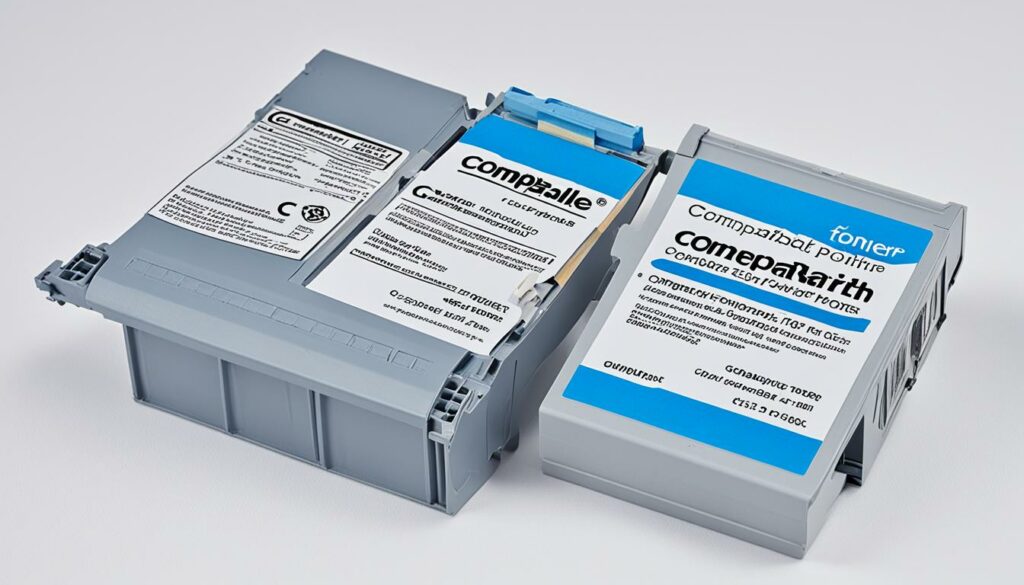
Pros and Cons of Remanufactured Toner Cartridges
Remanufactured toner cartridges offer both pros and cons to consider when making a purchasing decision. Let’s explore the advantages and disadvantages of opting for these refilled cartridges.
Cost Savings
One of the main benefits of remanufactured toner cartridges is the significant cost savings they provide. Compared to OEM cartridges, remanufactured options are more budget-friendly, making them an attractive choice for businesses and individuals looking to cut down on printing expenses. By choosing remanufactured cartridges, you can enjoy substantial savings without compromising too much on print quality or performance.
Quality Variability
However, it’s essential to note that the quality of remanufactured toner cartridges can vary depending on factors such as the remanufacturing process and the brand. While some remanufactured cartridges deliver comparable quality to OEM options, others may produce prints that are less sharp or vibrant. This variability in quality is something to be mindful of when considering whether to opt for remanufactured toner cartridges.
Availability Challenges
An additional consideration is the availability of remanufactured toner cartridges. While OEM cartridges are widely available for various printer models, remanufactured options may be less accessible, particularly for newer or less popular printer models. Therefore, if you have a printer that requires specific toner cartridges, it’s crucial to check if remanufactured options are readily available before making your purchase.
Potential Cartridge Issues
Another factor to be aware of is that there is a risk of overfilled or defective cartridges with remanufactured options. As the cartridges are refilled, there is a possibility that some may be overfilled, leading to leaks or messy prints. Additionally, the quality control processes for remanufactured cartridges may not be as stringent as those for OEM options, increasing the likelihood of encountering defective cartridges. It is important to carefully inspect remanufactured cartridges upon purchase and reach out to the manufacturer or retailer if any issues arise.
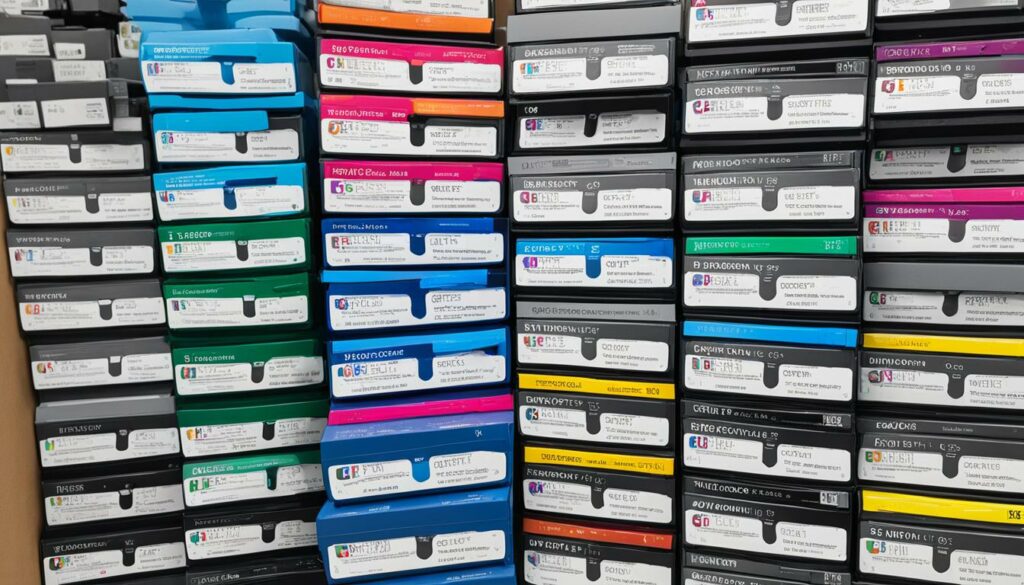
| Pros | Cons |
|---|---|
| Significant cost savings | Potential variability in print quality |
| Helps reduce waste | Availability challenges for specific printer models |
| Possible overfilled or defective cartridges |
Print Quality Comparison
When it comes to print quality, both genuine toners and compatible toner cartridges have their strengths and weaknesses. Genuine toners, designed specifically for the printer model they are used for, offer superior print quality. With crisper text, sharper images, and accurate coloring, they deliver professional results that are hard to match.
On the other hand, compatible toner cartridges can provide comparable print quality, but there is a chance that the output may lack the same level of sharpness and accurate coloring. While many compatible toner cartridges strive to meet the same standards as genuine toners, inconsistencies in manufacturing processes and quality control can lead to variations in print quality.
When considering print quality, it’s essential to understand your needs and expectations. If precise and high-quality printing is crucial for your business or professional work, genuine toners are a reliable choice. They ensure consistent and exceptional print results, especially for tasks that demand accuracy and clarity.
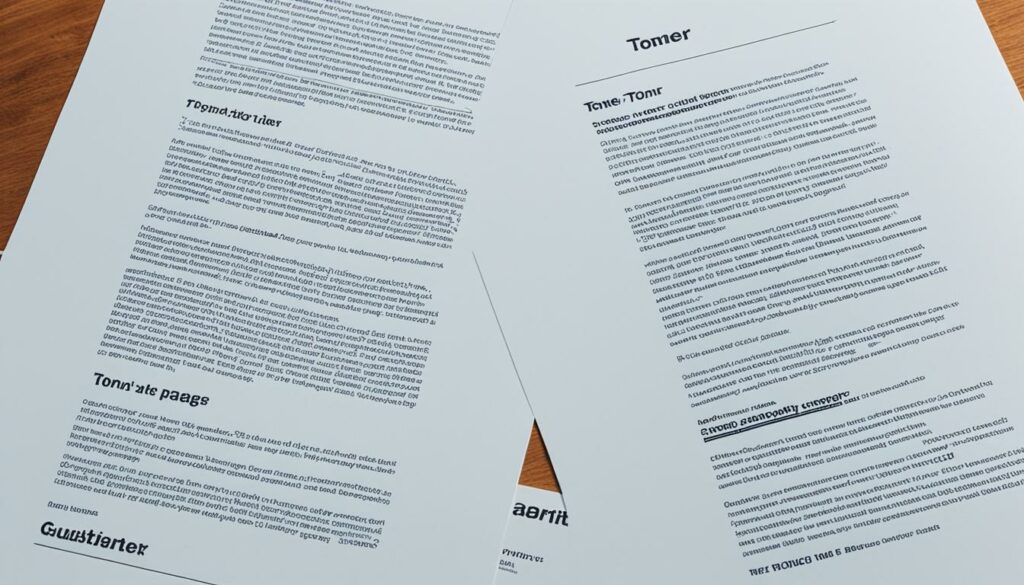
However, compatible toner cartridges can still provide satisfactory print quality for everyday printing needs. They may be suitable for personal use, internal documents, or drafts that do not require the same level of precision as professional output. By opting for compatible toners, you can potentially achieve significant cost savings without compromising print quality.
Tip: To make an informed decision about which type of toner to choose, consider the specific requirements of your printing tasks and the importance of print quality for your needs.
Risk and Malfunctioning Comparison
When it comes to choosing between genuine toners and compatible toner cartridges, it’s important to consider the risk of malfunctioning associated with each option. While genuine toners have a proven track record of reliability, compatible toner cartridges carry a higher risk of malfunctioning due to variations in quality across different brands.
One common issue with compatible toner cartridges is the potential for toner leakage, which can lead to smudged prints, toner buildup inside the printer, and even damage to the internal components. This risk is significantly higher with compatible toners compared to genuine toners, as genuine toners undergo stringent quality control measures to ensure they are free from such issues.
Furthermore, remanufactured toner cartridges, which are refilled cartridges, may pose additional risks such as backgrounding issues and contamination due to waste toner and debris. These contaminants can affect print quality and potentially damage the printer over time. Genuine toners, on the other hand, are designed specifically for the printer model they are used for, minimizing the risk of such malfunctions.
“Using genuine toners ensures peace of mind and minimizes the risk of malfunctioning, allowing you to focus on your printing tasks without any interruptions or concerns.”
It’s important to note that not all compatible toner cartridges are created equal, and the risk of malfunctioning can vary depending on the brand and quality. However, as a general rule, genuine toners provide a higher level of assurance and reliability, making them a safer choice for your printing needs.
| Genuine Toners | Compatible Toner Cartridges | |
|---|---|---|
| Risk of Malfunctioning | Low | High |
| Quality Control | Stringent measures in place | Varies depending on brand |
| Toner Leakage | Rare to none | Potential risk |
| Potential Contamination | N/A | Waste toner and debris can contaminate prints |
Choosing genuine toners not only reduces the risk of malfunctioning but also ensures consistent print quality, extends the lifespan of your printer, and provides peace of mind. While compatible toner cartridges may offer cost savings, it’s essential to weigh the potential risks and decide what is more important for your printing needs.
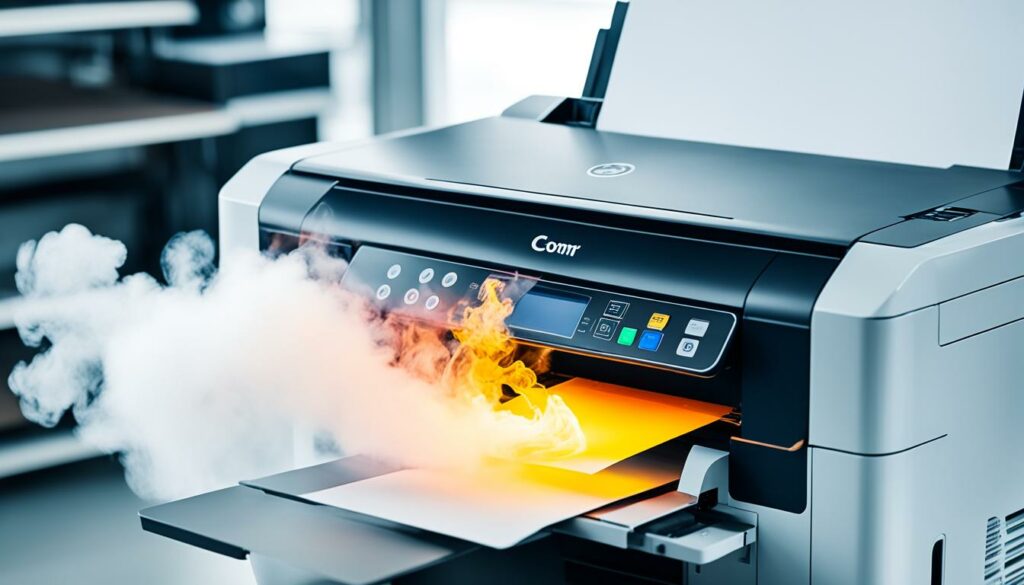
Price Comparison
When it comes to choosing between genuine toners and compatible toner cartridges, price is often a significant factor. While genuine toners are generally more expensive than their compatible counterparts, it’s crucial to consider the overall cost-effectiveness and long-term value of each option.
Genuine toners may come with a higher price tag initially, but their durability and page yield can make them more cost-effective in the long run. These toners are specifically designed for the printer model they are intended for, ensuring optimal performance and longevity. Investing in genuine toners can help minimize the risk of potential repair costs that may arise from using non-genuine toners. Additionally, manufacturers often offer warranties or guarantees for genuine toner cartridges, providing further peace of mind.
On the other hand, compatible toner cartridges are generally cheaper compared to genuine toners. They can be a more budget-friendly option upfront, especially if you have a high volume of printing needs. However, it is important to consider the potential risks associated with using non-genuine toners, such as inconsistent print quality and potential issues like vertical lines, light prints, or toner smearing.
To make an informed purchasing decision, it’s essential to weigh the price difference and potential savings against factors like print quality, durability, and potential repair costs. Consider your specific printing requirements and the long-term cost-effectiveness of each option. Remember, while compatible toner cartridges may seem more affordable initially, the overall value and quality offered by genuine toners may outweigh the upfront cost difference.
Price Comparison
| Toner Type | Price Range | Factors to Consider |
|---|---|---|
| Genuine Toners | $$ – $$$ | Durability, page yield, potential repair costs |
| Compatible Toner Cartridges | $ – $$ | Initial cost savings, potential risks and inconsistencies |
Note: Price ranges are approximate and may vary depending on the printer model and specific toner cartridge.

Conclusion
After weighing the pros and cons of compatible toner vs genuine toner, it’s clear that both options have their advantages and disadvantages. Genuine toners offer superior print quality and a lower risk of malfunctioning, but they come at a higher price. On the other hand, compatible toner cartridges are more cost-effective but may lack consistency in quality.
When making a decision between compatible toner and genuine toner, it’s crucial to consider your priorities and budget. If print quality and reliability are your main concerns, investing in genuine toners is worth considering. However, if cost-effectiveness is a priority and you’re willing to accept some variability in print quality, compatible toner cartridges can be a suitable alternative.
In the end, the choice between compatible toner and genuine toner depends on your individual printing needs and budget. Consider the long-term cost and quality comparison to determine the best option for you. Whether you choose compatible toner or genuine toner, ensure that you make an informed decision that aligns with your requirements for both cost and print quality.
Source Links
- https://www.marconet.com/blog/the-truth-about-compatible-toner-vs-oem-toner
- https://www.tonerbuzz.com/blog/toner-cartridges-genuine-oem-vs-compatible-vs-remanufactured/
- https://www.officeinteriors.ca/blog/oem-vs-new-compatible-toner-whats-the-difference-and-which-to-buy/

Morgan Azhari, the owner of PrinterUpdate.net, is a dedicated expert in the field of printers, leveraging a wealth of experience and education to create a platform that passionately shares insights and solutions.
With a goal to enhance the printer user experience, my vision for the website is to provide valuable content, making a positive impact on individuals navigating the complexities of printers.
